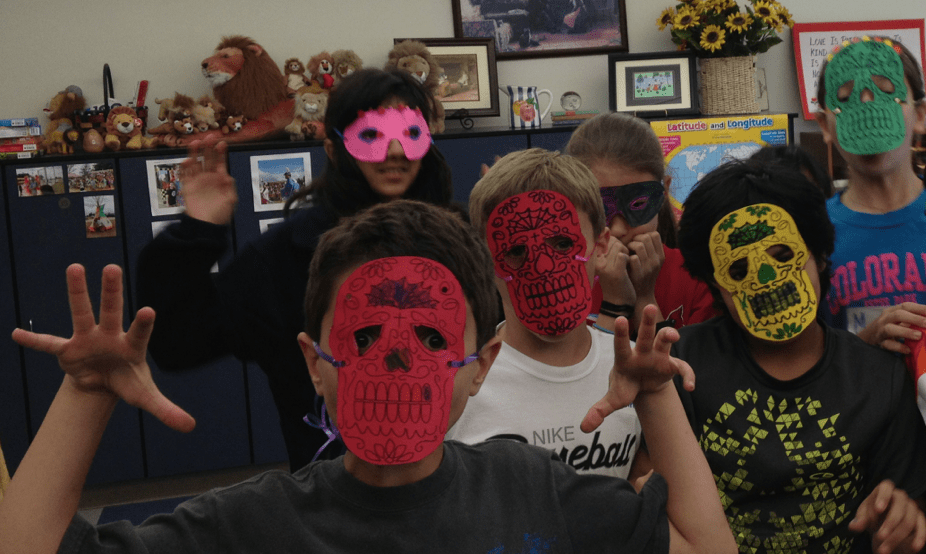Towards a New Definition of Teaching

Earlier this week, as one of my students handed me the note, I thought I glimpsed a hint of apology on her face. “I found this in my desk,” she said. I unfolded the crumpled piece of paper, expecting to find the usual trivial note-passing mischief favored by ten- and eleven-year-olds. Instead, I found this comment: “I didn’t think we were in computer class. She’s teaching us about the Internet. I thought this was supposed to be English.”
At first I was stunned. Clearly this student has somehow missed my frequent reminders that reading and writing skills are as important online as they are in other formats.Then I felt defensive. Hadn’t I been talking about how and why to give credit for using online content, elaborating on copyright, Creative Commons licensing, and scholarly documentation? Understanding how to give credit, I knew, would be important for my students’ online writing assignments and research projects in the future. Finally, I was just plain bummed out. Whoever wrote the note was stuck in an old paradigm: teaching strictly defined by discipline and totaly unrelated to the way we learn through technology today.
Ah, I thought, it’s time, past time really, that we helped students and parents understand a new definition of teaching.
What Teaching Is Not
Contrary to popular belief, teaching is not, and has never been, limited to lecturing. The lecture is sometimes a marvelous and occasionally an efficient method for delivering content, for passing along information, for detailing a process, or for disseminating ideas. Teaching happens once the lecture is over and learning can begin.
Teaching is not confined in narrowly defined subject areas constrained by the arbitrary divisions of school culture. It amazes me how quickly children fall into the trap of seeing courses as separate and completely unrelated disciplines as they move into the traditional format of middle school and beyond.
Teaching in the “content” areas is not somehow exempt from the digital universe. Computer class is not the only place for learning and reinforcing skills related to Internet use, applications, or digital citizenship. Like reading and writing, technology skills are required for learning across the curriculum.
What Teaching Is
Teaching involves deeply understanding a constantly evolving group of learners and envisioning where they need to go next. As a teacher, I must recognize that the students I teach today are not the same breed as the students I began teaching three decades ago. Confronted by traditional teaching methods (the lecturing, note-taking, regurgitation cycle), they tune out and shut down. Who are these kids, I ask myself on a daily basis. What captures their attention? Where are they cutting corners and making mistakes? How do they learn best?
Teaching means creating environments and structuring opportunities for learning, then getting out of the way. If we’ve learned anything about our students today, it’s that they learn by doing, making, and experiencing. They are gamers at heart, exploring new worlds and trying things again and again until they get it right. The learning opportunities we create need to reflect this.
Teaching is a moving target. It requires constant evaluation of tools, content, and strategies for engaging learners. As we build the spaces for our students to learn in, we must constantly reflect on the best tools (digital or otherwise) for our purposes. We must choose the content they need to level up rather than braindump our expertise and proficiency in the area to which we have been assigned. We must select the right strategies and formats (in person or online) for providing foundations and sparking the interest that will carry our students towards mastery.
Teaching focuses on helping learners develop the skills they need to learn across content areas. The world we live in is not divided but blended and multi-faceted. If we address teaching and learning in authentic contexts, we help students make connections, build resilience, and nurture creativity and innovation. We teach collaboration, communication, critical thinking, and design.
Teaching moves learners out of comfortable, easy spaces, sparks passions, nurtures hard work, and inspires growth. We nudge and question, we challenge and push. We are never satisfied, though we are frequently amazed at what students can do when they are given permission to learn. We champion hard work and grit. We show students how far they can go, and we celebrate their achievements along the way.
Teaching isn’t what it used to be. Learning isn’t either.
I don’t think the students and parents who push back against non-traditional teaching methods really want us to go back to the old, unworkable paradigm of teaching and learning. They are just mystified and sometimes scared by the unknown before us. They don’t really want the learning ahead of them to lack challenges, though they are daunted by the often overwhelming shifting landscape of learning. They want to embody a growth mindset and benefit from the independent, individualized learning of the “flipped” mastery teaching method, though they may need some help along the way. They long for the regenerative spirit of learning through “play, innovation, and the cultivation of the imagination” promoted by John Seely Brown, though they may have forgotten how to set it in motion. They know at a gut level that the world has changed, they are smart enough to see that education must change with it, but they feel stymied by the revolution in learning, as Seth Godin proclaims it, that lies ahead of us.
We all have our work cut out for us. Let’s go.






0 Comments
Leave a Comment
Your email address will not be published. All fields are required.